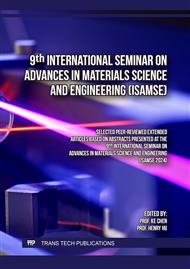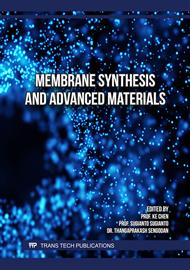p.41
p.53
p.61
p.69
p.81
p.91
p.97
p.103
p.109
Cooling, Microstructure and Properties of Permanent Steel Mold Cast Wrought AZ80 Alloy with Varying Casting Wall Sizes
Abstract:
The wrought magnesium alloy AZ80, comprising 8 wt% aluminum, underwent fabrication via permanent steel mold casting (PSMC), involving three distinct stages with wall sizes measuring 6 mm, 10 mm, and 20 mm. The numerical simulation of the solidification showed that the cooling rate of the step casting increased, when the wall size decreased. The as-cast alloy's microstructure underwent scrutiny through optical microscopy and scanning electron microscopy (SEM), complemented by energy dispersive spectroscopy (EDS) analysis. Findings from the microstructure examinations unveiled the presence of primary Mg phase across all three sections of the cast AZ80 alloy, accompanied by micron and nanosized Mg-Al-Zn intermetallic phases, as well as micron-sized Al-Mn intermetallic phases. But the intermetallic contents increased, and the dendrite sizes and the porosity levels decreased, as the wall sizes reduced. The tensile testing results revealed significant findings regarding the ultimate tensile strength (UTS), yield strength (YS), modulus, resilience, and toughness, increased, when the wall sizes decreased to 6 from 20 mm. The negative effect of large casting wall sizes on ductility was demonstrated. Exceptional tensile properties of the thin wall resulted from fine dendritic structure, high intermetallic content, and minimal porosity level.
Info:
Periodical:
Pages:
81-89
Citation:
Online since:
December 2024
Authors:
Price:
Сopyright:
© 2024 Trans Tech Publications Ltd. All Rights Reserved
Share:
Citation:



